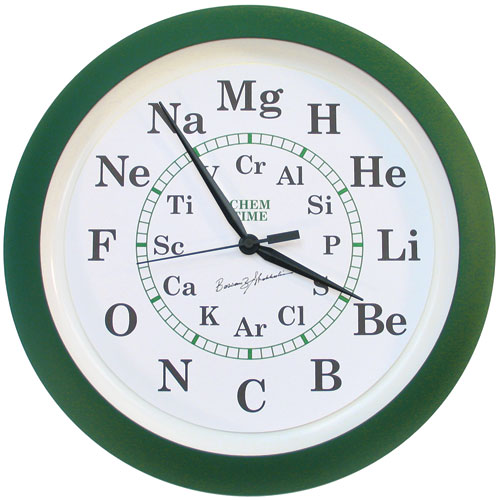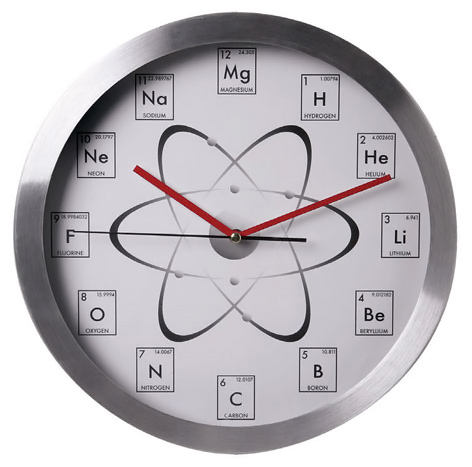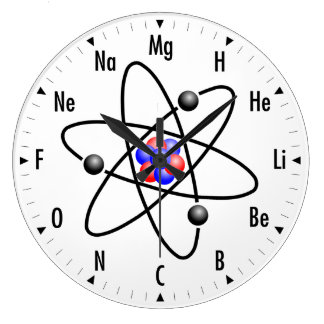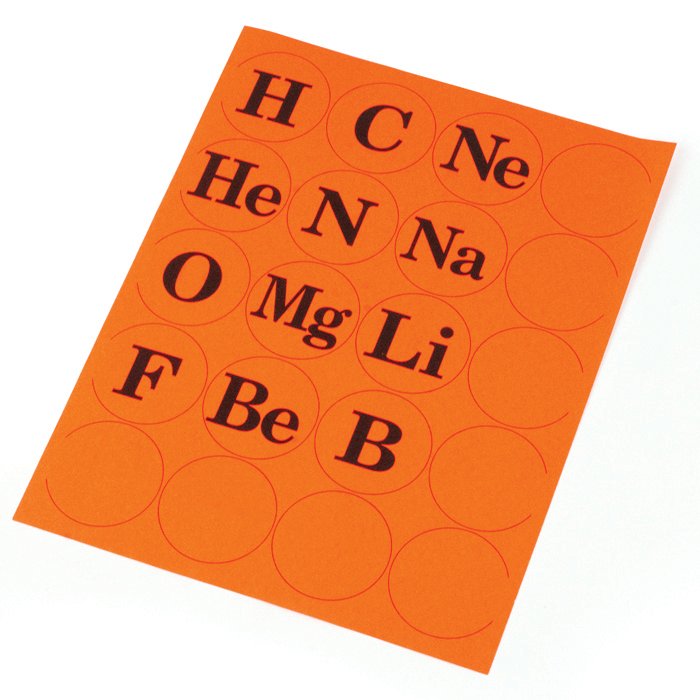Chemical clock
Under an oscillating reaction is understood in the chemical form of a sequence of complex chemical reactions in which the concentration of intermediate products and catalysts does not occupy a stationary state, but has periodic variations. This is a special case of dissipative structures. Under certain conditions it can also aperiodic, are non-monotonic changes - the system behaves chaotically. One can distinguish between oscillating reactions in heterogeneous or homogeneous media, the heterogeneous reactions are explicitly bound to phase boundaries. Oscillating reactions are widespread. We want to know them but not only for theoretical considerations (as most prominent example of the Belousov -Zhabotinsky reaction) or technical reasons ( reaction in the chemical industry ), but they are of immense importance for life. So they act as a clock for periodic processes ( sinus node impulse formation of the system of the heart ), or synchronize the nerve activity in the brain. They also play an important role in the electrochemical dissolution of metal in acid, and the oxidation of carbon monoxide, hydrogen sulfide and hydrocarbons.
History
While initially took a broad interest for oscillating reactions only to systems in homogeneous media, but it was heterogeneous systems in which such behavior first - and very early - was observed. The first description of such a reaction, the polarization reversal at electrode pair iron / silver in nitric acid solution of silver nitrate, was published in 1828 by Gustav Theodor Fechner. 1829 described Fried Ferdinand Runge the beating mercury heart in the form known today. In 1833 John FW Herschel discovered, known as an astronomer and inventor of the cyanotype process, periodic reactions on dissolution of iron in nitric acid for certain concentrations of the acid. Oscillating reactions are frequently encountered in electrochemical operations where over it has also been reported early and numerous, inter alia, in 1842 by Christian Friedrich Schönbein or 1844 by James Prescott Joule.
Interestingly, employed at the beginning of the twentieth century, the chemist Alfred J. Lotka theoretically with periodic reactions. In this, his time also remained unheeded work, he presents an autocatalytic reaction scheme, which is oscillating equilibrium. Lotka later made important contributions to population dynamics ( Lotka -Volterra rules, pig cycle ) whose mathematical modeling contain substantial analogies to just that of oscillating reactions.
Morgan JS discovered in 1916 by the reaction of formic acid ( formic acid ) with conc. Sulfuric acid to carbon monoxide and water under certain conditions an oscillating gas development. Ignites is the escaping carbon monoxide, so you can then observe a greater and becomes smaller the flame. It performs this oscillation back to a supersaturation of the solution and subsequent oversaturation.
Oscillating the first reaction in a homogeneous medium, Bray- Liebhafsky reaction was described in 1921 by William C. Bray. This examined the catalytic decomposition of hydrogen peroxide in the presence of iodate and noticed a periodically fluctuating oxygen evolution. However, the publication has received scant attention; also been claimed that the periodic behavior would contaminants from that would create heterophase interfaces. The latter were regarded at the time as a prerequisite for the occurrence of such oscillations.
Only the very hesitant to publish Boris Beloussows - again virtually unnoticed in a particularly non-specialist journal because the corresponding journals refused to accept his product respectively Belousov their extensive revision proposals could not accept - towards taking place exploration of the homogeneous system bromate / cerium (IV ) -Salz/Malonsäure, beginning with works by Anatoly Schabotinski 1964 showed that there are indeed such homogeneous reactions. Published in 1972 by Richard J. Field, Endre Körös and Richard M. Noyes a mechanism ( FKN ) mechanism for modeling the Belousov -Zhabotinsky reaction: with her installation of 18 partial reactions with 21 species involved they occupied the high complexity of this system.
1973 discovered Briggs and Rauscher an impressive oscillating reaction ( Briggs -Rauscher reaction) when they combined the Bray- Liebhafsky reaction and Belousov -Zhabotinsky reaction. This oscillating Ioduhr showed a rhythmic color change between colorless, golden brown and deep blue.
Requirements
The occurrence of an oscillating reaction is subject to certain conditions:
- The system is far from thermodynamic equilibrium away (high exergonicity the reaction? G <0).
- The system has at least one reaction step, which is a positive / negative feedback, including ( for example, by auto-catalysis or autoinhibition ) and thereby producing a non-linear relationship.
- The system must show bistability, that is, it has at least two different stable steady states.
- The system must be open to the material and energy exchange with the environment.
Non-linearity of the reaction
The non-linearity may be generated ( in electrochemical processes ), or temperature change, for example, by auto-catalytic partial steps rhythmic passivation of the electrodes. Here, an effect occurs, which is referred to in control theory as feedback. The results of distinct steps (such as change in temperature / concentration / electrode condition ) act back on the rate constants or concentrations and thereby accelerate or retard the reaction.
Modeling
As always required a large number of individual coupled steps, the mechanisms of oscillating reaction to today are not exactly known. However, there are different reaction models, which show oscillation under certain conditions. The simplest model of a reaction A → B was by Alfred J. Lotka:
(1) (2) (3)
The sub-steps (1) and (2) are autocatalytic reactions. They cause the feedback.
Another model for the reaction course of the oscillating reaction is developed by Ilya Prigogine Brusselator and employees.
Bistability
In addition to the oscillation occur in such a system also bistability. There are two stable reaction conditions ( a high / another low reaction rate or Intermediatkonzentration ) that the system may assume either. By disturbance of the system from the outside of a state may be preferred.
Electrochemical oscillations
The beating mercury heart is an electrochemical oscillation basically, since in this case two metals (mercury and iron) are combined in a local element.
A galvanic cell normally produces a DC voltage. The following experiment produced under certain conditions, a pulsating voltage: It is a lead dioxide electrode as it is in the lead-acid battery with a stainless steel electrode which is coated with platinum and palladium, in combination. The electrolyte is diluted sulfuric acid. In addition, the stainless steel electrode being surrounded by a formaldehyde solution ( Methanallösung ) and acts as a fuel anode. If a load this galvanic cell the following overall reaction occurs:
It is at the cathode lead ( IV) dioxide by absorbing electrons to lead (II) sulfate reduces the lead. Simultaneously formaldehyde is oxidized to water and carbon dioxide with the release of electrons at the anode. The pulsating voltage is now due to the fact that the anode with intermediates of oxidation is excessive. This will reduce the generated voltage, the potential at the anode is positive. Thereafter, the intermediate products are further oxidized, the electrode surface is free again, and the voltage will rise again, until the electrode surface is covered again intermediates. The result is depending on the load resistor externally applied a sawtooth voltage between 0.3 and 0.6 Hz, which may be visualized using an oscilloscope. A connected bulbs flicker in time with the pulsating voltage.
Another example is a galvanic element comprising an iron - and copper sheet with an electrolyte of a potassium bromate solution in diluted sulfuric acid. In this case, iron is oxidized to iron ( II) ions, wherein the bromate ions are reduced to bromide ions. The measured voltage is vibrantly, which can be explained by the fact that the iron electrode is briefly covered by a thin oxide layer and passivated with it. This leads to a sharp rise in potential. In the next step, the oxide film is dissolved by hydrogen ions again, the iron is again turned on and the potential decreases. This cycle is repeated several times.
Occurrence in biological systems
Many biochemical reactions have the conditions ( as, inter alia, by competitive inhibition of enzymes ) to oscillate under given conditions. This has been observed, for example, in reactions of glycolysis or cell respiration. On oscillating reactions is also based the clocking of the heartbeat (see sinus node ). To oscillations with significantly longer periods starting in the minute range is for the studied biological rhythms in chronobiology (see also circadian rhythm, ultradian rhythm ). These depend not only on external factors (sunlight, temperature); Rather, the timing is ( as in the suprachiasmatic nucleus ) generated in certain cell areas. The exact biochemical backgrounds, however, are still in the dark. Oscillating systems in living organisms can be visualized also as a complex two - and three-dimensional structures, such as are formed for example of intracellular Ca2 waves.










